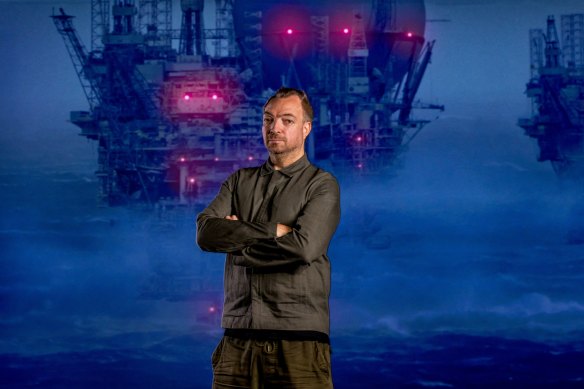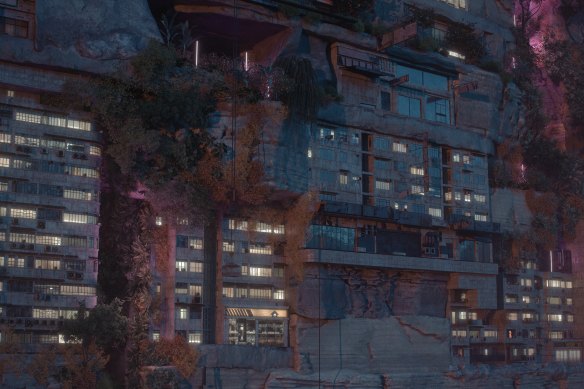
Climate anxiety is the neurosis of our age. According to a recent study, one in 10 Americans report symptoms of anxiety because of global warming. For those between the ages of 16-25, the number jumps to an alarming 50 percent. In Australia, a survey last year found that 38 percent of young people were experiencing “high psychological distress.”
Whether one accepts the wisdom of statistics, these figures are going nowhere but up. NASA just announced that 2023 was the hottest summer on record – a disturbing thought for the forthcoming season in the Southern Hemisphere. Scientists are predicting the next five years will witness sharp rises in global temperature. By now there is overwhelming evidence that climate change is real and a vast consensus of opinion that needs no further convincing.

Liam Young’s Planet City, 2020, and The Great Endeavour, 2023, are showing at the NGV.
The big surprise is not that people are anxious and distressed, but that so many politicians, business tycoons and media commentators continue to deny or ignore the problem. No matter that every news bulletin is packed with images of floods, fires, droughts, and hurricanes, the survival of life on earth remains less important than short-term profit.
There’s a growing tendency to blame science for getting us into this mess, but science doesn’t force us to cling to our lifestyle and luxuries when sacrifices are necessary. Neither can it be replaced by “alternative” forms of knowledge, which may have worked for small communities in ages past but can never satisfy the needs of today’s world. If science bears some responsibility for the problem, only science offers a glimmer of hope.
All of this is only too clear to Liam Young (b. 1979), an Australian architect and multimedia artist based in Los Angeles. Over the past decade, Young has produced a series of films and performance works that have brought him to worldwide attention, although – like the globally acclaimed AV artist Lynette Wallworth - he remains relatively unknown in his own country.
The National Gallery of Victoria is addressing that neglect with the exhibition Liam Young: Planetary Redesign. It consists of two large-screen film presentations: Planet City, which was first shown during the 2020 NGV Triennial, and a new piece, The Great Endeavour. The former presents a visionary scheme for a city, based in the Amazon, that will house the entire population of the world – projected to reach 10 billion by 2050. Were the Planet City built along the same lines as today’s most high-density megalopolises it would occupy 0.2 percent of the world’s surface. The remaining area would be allowed to regenerate, in preparation for a day when people would be able to return to their native lands.

“City cliffs” in Planet City.Credit: Liam Young
It sounds like a complete science fiction fantasy, but Young and his team have calculated all the logistics, which are listed on the cover of the small book published as part of the project: 1 city; 10,157,030,257 people; 221,376 sq. kms of building; 121,307 sq. kms of hydro electric canals; 49,445,671,570 solar panels, and so on.
The second film, The Great Endeavour, gives visual expression to the gargantuan effort we would have to make to extract enough carbon from the atmosphere to offset the quantities already accumulated. It’s a vision of gigantic wind farms set in the oceans, of solar panels laid out amid immense swathes of desert, of a worldwide campaign to harness natural energy sources and begin the repair of the planet. It would be “the largest engineering project in human history, equivalent in size to that of the entire fossil fuel industry.”



























